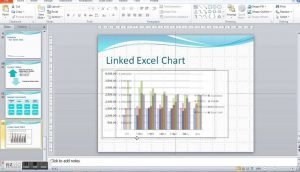Here are some cloud computing basics with daily life examples. Put on your reading glasses and read on.
What do you think when you see clouds in the sky? You know these fluffy aerosols carry liquid droplets, frozen crystals, or atmospheric particles. And what comes to your mind when you hear “cloud” in terms of data? You might have an idea about it as it is a common term used these days. But what exactly it is? What is cloud computing? And what role does it play in our everyday lives? Let’s see.
Simply put, the word “cloud” is used as a metaphor for “Internet.” It is empowered by computing that eases our internet functions. Precisely, cloud computing means storing and access your data and programs over the internet. Just the way, atmospheric cloud carries water droplets, frozen crystals, etc., the internet cloud holds your data. These on-demand cloud computing services have gained much importance in corporate data centers.
Cloud Computing Basics – What is Cloud Computing?

In simplest terms, cloud computing is the approach in which your data is stored up in the nebulous “cloud” that the Internet represents. In other words, the cloud comprises groups of computers, all over the world, where the content is stored. Connected securely to your computers and mobile phones, the cloud facilitates you to access your data and applications easier and faster.
There are various companies that provide you this service and you can access your data on the internet whenever you want. Organizations store their information here because these places have immense space.
Cloud computing delivers different services that include servers, storage, and applications to computers and devices of organizations through the Internet. These servers are in data centers that safely house your applications, programs, and more. Resources of computing are shared and granted access as virtual resources in a scalable and secured way.
Legends’ Thoughts on Cloud Computing

Before we proceed, let’s have a look at some of the legends’ take on cloud computing. Their words of wisdom have further simplified the cloud computing meaning, making it easy to understand.
- “Cloud Computing is about making computing simple. Just like a water tap saves people traveling to a well to access clean water, Cloud Computing helps people access computing quickly and with the minimum of fuss.” – Ian van Reenen, CTO, and co-founder of CentraStage
- “It’s a bit like using a library in the sky where you pick from different types of games, films or any other apps and pay for those you use – but like a library you never own them.” – Ralf Ebbinghaus, CEO at Swyx
- “When you post a picture on Facebook, where is it kept? Just as you can’t see rain in clouds, we can’t see where the pictures, videos, and messages that we upload live.” – Sean McAvan, MD at NaviSite
Simple Cloud Computing Examples
Now, let’s delve into cloud computing deeper with real-life examples.
1. Google Search

Most of us use cloud computing throughout the day without even realizing it. When you sit at your PC and type a query for Google, the computer on your desk isn’t playing much part in finding the answers you need: it’s no more than a messenger. The words you type are swiftly shuttled over the internet to one of Google’s hundreds of thousands of clustered PCs, which dig out your results and send them promptly back to you.
2. Your Favorite Music

Accessing your favorite music for free via real-time streaming is extremely common these days. You can even create a collection of your favorite tracks and enjoy listening to those on any device; wherever, whenever you want. The music you listen to stays up in the cloud and reaches you through online audio distribution platforms and music-sharing websites.
3. Email

Your emails are carried in the cloud. These are stored and processed through a server and you can access these on a web browser, from any part of the world. With email on the cloud, it becomes super useful for busy people, who have the convenience to access their important emails at any time, at any place.
4. Online Documentation

We are used to preparing documents on the internet these days. All you need to do is to log in to a web-based service, for instance – Google Documents; and can create the documents required by using Web-based software. The documents can be spreadsheets, PowerPoint presentations etc. your document is remotely stored on a Web server, facilitating you to access it from any computer that is connected to the internet, in any part of the world, at a time of your convenience. Again, all of this is stored on the cloud and reaches you whenever you want, just in time.
In a nutshell, cloud computing makes access to data and applications convenient and quick from any device that has an internet connection, from any corner of the earth. It has changed the way a number of businesses store and access their data. It is flexible, ensures data recovery, strong security, and demands little or no maintenance. Did you realize? Clouds, both atmospheric and internet-based play a pivotal role in our lives.



